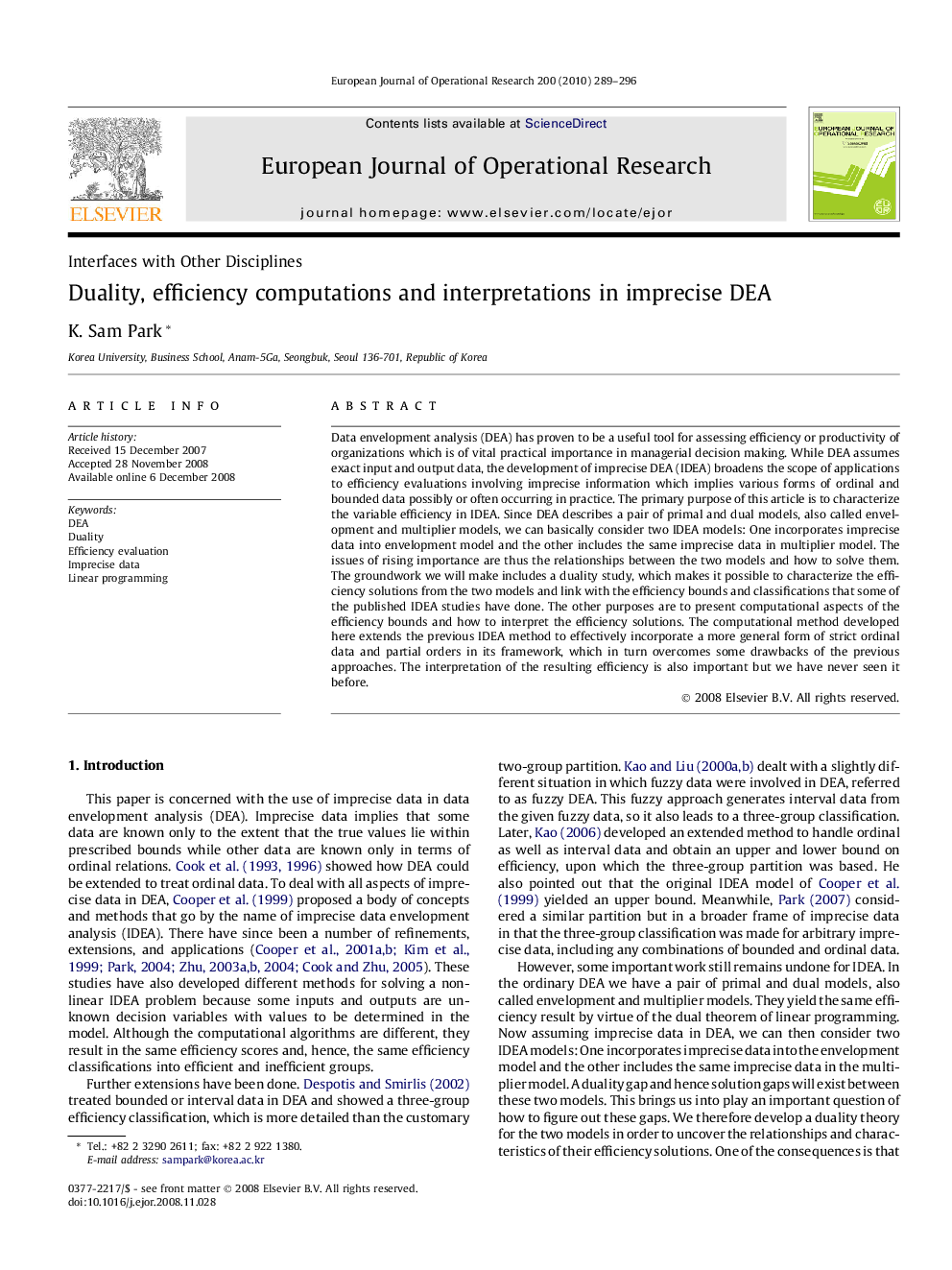| Article ID | Journal | Published Year | Pages | File Type |
|---|---|---|---|---|
| 480874 | European Journal of Operational Research | 2010 | 8 Pages |
Data envelopment analysis (DEA) has proven to be a useful tool for assessing efficiency or productivity of organizations which is of vital practical importance in managerial decision making. While DEA assumes exact input and output data, the development of imprecise DEA (IDEA) broadens the scope of applications to efficiency evaluations involving imprecise information which implies various forms of ordinal and bounded data possibly or often occurring in practice. The primary purpose of this article is to characterize the variable efficiency in IDEA. Since DEA describes a pair of primal and dual models, also called envelopment and multiplier models, we can basically consider two IDEA models: One incorporates imprecise data into envelopment model and the other includes the same imprecise data in multiplier model. The issues of rising importance are thus the relationships between the two models and how to solve them. The groundwork we will make includes a duality study, which makes it possible to characterize the efficiency solutions from the two models and link with the efficiency bounds and classifications that some of the published IDEA studies have done. The other purposes are to present computational aspects of the efficiency bounds and how to interpret the efficiency solutions. The computational method developed here extends the previous IDEA method to effectively incorporate a more general form of strict ordinal data and partial orders in its framework, which in turn overcomes some drawbacks of the previous approaches. The interpretation of the resulting efficiency is also important but we have never seen it before.
